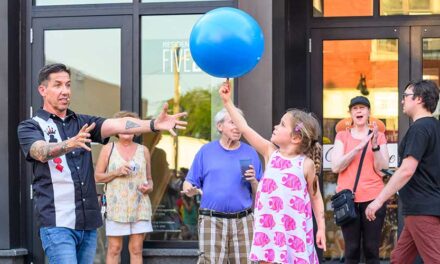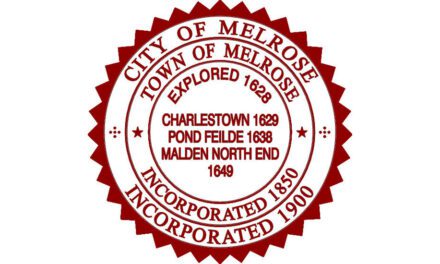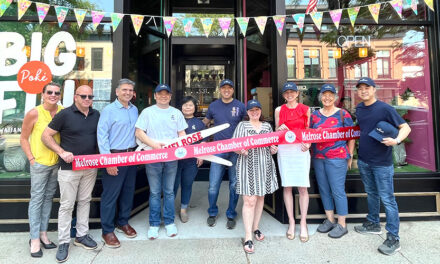Published May 3, 2019
MELROSE — Kate Lipper-Garabedian wants the city to be ready in case the economy turns sour.
Last month, the alderman-at-large filed an order concerning commercial properties that have been vacant for at least 90 days. A centralized registry of vacant buildings would be created, and the owner of a long-term vacant building would either need to display art in the windows, which advocates feel would improve the neighborhood landscape and draw attention to the available space, or pay a “vacancy fee.”
“Many of you,” Lipper-Garabedian wrote in a recent email, “have expressed dissatisfaction with the state of currently vacant properties, and this ordinance is designed to address those concerns. While there aren’t many vacancies in Melrose at the moment, that could change with the next economic downturn, and my proposal will help the city be prepared in advance.”
The proposal, if passed, would add a new section to the city’s ordinances entitled “Registration and Maintenance of Vacant Commercial Buildings.” The aldermen have yet to begin debate on the plan.
The purpose of Lipper-Garabedian’s order is three-fold. It would require “that property owners of vacant commercial properties submit information to the City for a centralized registry and demonstrate efforts to maintain such properties in a manner and condition that does not detract from neighborhood integrity and vitality”; would enable “the City to track and monitor vacant properties and serve as a collaborative partner to commerical property owners by opening channels of communication so that the City can better understand the nature of the vacancy and assist, as appropriate, with strategies that help the owner either tenant the space or adhere to minimum standards for the appearance and maintenance of the property while vacant”; and would “promote the vibrancy of the City’s commercial corridors and further elevate the City’s public welfare and economic health through a vacant commercial property registry, a public art display program, and, as necessary, a fee schedule.”
The city’s Planning and Community Development Department would be in charge of an online inventory of any vacant commercial properties, and would add information like their address and location, appropriate uses under the city’s zoning rules, the size of the available space, the desired rent and contact information for the property owner or the person responsible for finding tenants.
The city’s Inspectional Services Department and the planning office would be notified no more than 10 days after a commercial property, or any portion or subdivision of one, becomes vacant. Once the property is no longer vacant or is sold, the owner would give written proof of lawful occupancy or sale to both departments.
At the time the vacant property is registered, the owner would have the chance to agree in writing to the display of public art in any exterior-facing window or upon other safe, visible exterior surfaces for the period of the vacancy in order to spotlight the vacancy, promote local culture and offset any detracting aesthetic to the neighborhood caused by the vacant property. The public art display would be granted “only as sufficient public art is available and appropriate to the location for the display, and the City, the artist, and the owner agree to terms for exhibition as set forth by the Office of Planning and Community Development.
If the property owner chooses not to display public art, he would be charged an vacancy registration fee of $400.




